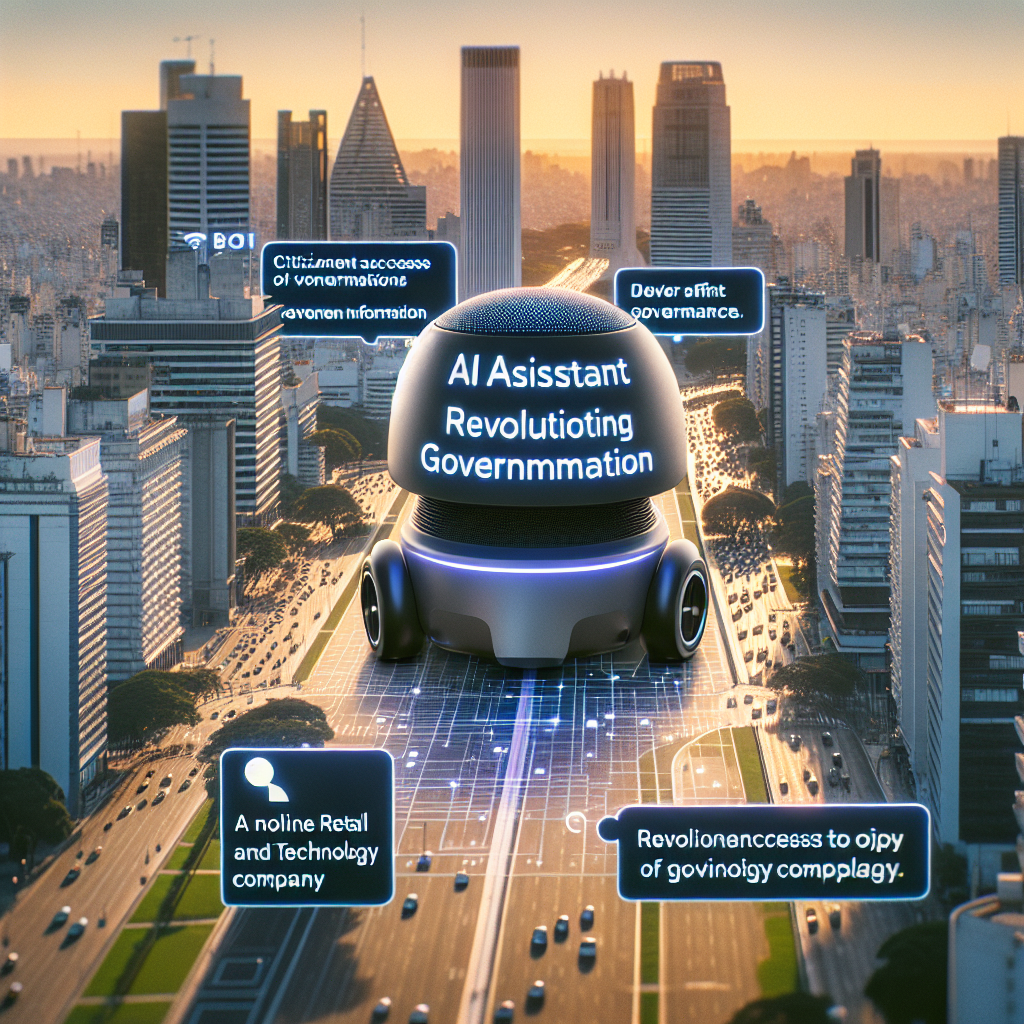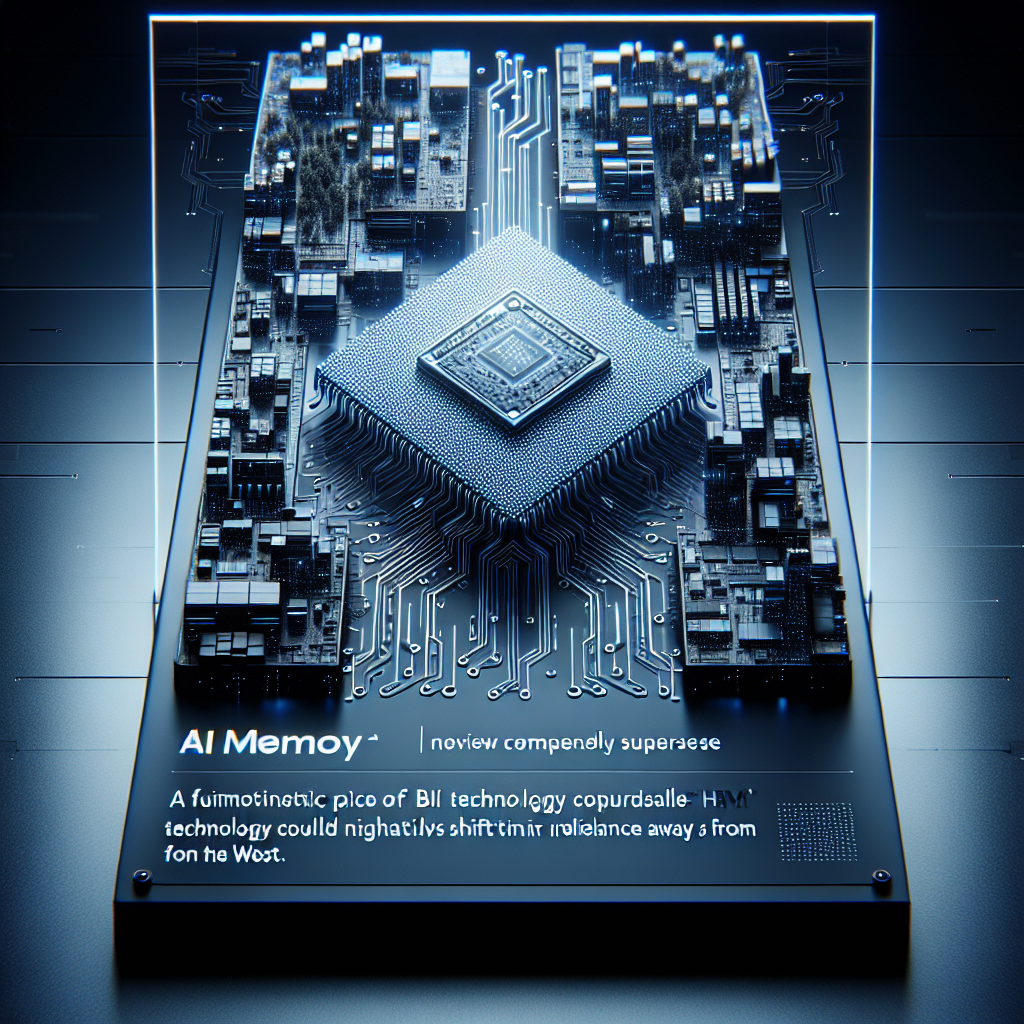-
Meet Boti: The AI assistant transforming how the citizens of Buenos Aires access government information with Amazon Bedrock

The Government of the City of Buenos Aires has made significant strides in enhancing citizen services through the introduction of an innovative AI assistant named Boti. Launched in February 2019, Botiis integrated into WhatsApp, which is the most popular messaging platform in Argentina. This initiative reflects the government’s commitment to improving accessibility to vital information and streamlining interactions between the city administration and its residents.
Boti provides citizens with a one-stop solution for a multitude of inquiries, such as renewing a driver’s license, accessing healthcare services, and learning about local cultural events. This AI assistant has quickly become the go-to communication channel for over three million conversations each month, highlighting its effectiveness and growing user base.
As Boti continues to evolve, the Government of Buenos Aires aims to deliver more sophisticated conversational experiences by utilizing the latest advancements in generative AI technologies. Citizens often encounter challenges in navigating the intricate bureaucratic landscape, which encompasses more than 1,300 government procedures, each with unique guidelines and exceptions. The government recognized the potential for Boti to enhance accessibility by directly addressing citizens’ questions and guiding them seamlessly to the appropriate procedures.
To realize this vision, the Government of Buenos Aires collaborated with the AWS Generative AI Innovation Center (GenAIIC) to pilot a solution levered on Amazon Bedrock and LangGraph. This collaborative effort produced an agentic AI assistant with two main components: an input guardrail system and a government procedures agent. The input guardrail employs a custom LLM classifier that evaluates incoming user queries, determining their appropriateness before approval or rejection. Once approved, an advanced government procedures agent retrieves pertinent procedural information and crafts tailored responses.
One striking feature of this solution is the novel reasoning retrieval system designed to enhance the accuracy of information retrieval. When a user query is processed, the system first provides comparative summaries to clarify similar procedures. Subsequently, it employs a large language model (LLM) to extract the most relevant information, ensuring that responses remain high-quality and contextually appropriate. The final output is articulated in Boti’s signature style, marked by short, useful messages delivered in Argentina’s distinct Rioplatense Spanish dialect. The developers paid special attention to unique linguistic elements such as the voseo—using “vos” instead of “tú”—and the periphrastic future tense, which adds local flavor to the assistant’s communications.
Throughout this post, the team delves into the specifics of the implemented agentic AI system, beginning with an overview of its design and highlighting the principal features aimed at addressing user needs. They provide an in-depth discussion of both the guardrail and agent components, assessing their performance and effectiveness. Their evaluations indicate that the guardrails successfully block harmful content, including offensive language, problematic opinions, and unethical behavior. The agent demonstrates impressive levels of accuracy, achieving up to 98.9% in retrieving and delivering the correct procedural information.
Boti represents a significant leap forward in public service accessibility, effectively utilizing generative AI technology to facilitate smoother interactions between citizens and government entities. By empowering individuals to easily access essential information and streamline administrative processes, the City Government enhances transparency and fosters a more informed populace. The implementation of this intelligent assistant indicates a promising future for local governance and the potential for further advancements in AI capabilities across different sectors.
As Boti continues to grow and improve, citizens of Buenos Aires can expect an even more enriched experience when interacting with their government. With advancements such as these, cities across the globe may look to Buenos Aires as a model for incorporating AI solutions that emphasize practicality and enhanced service delivery to citizens.
-
Netstock AI-Driven Opportunity Engine™ Surpasses One Million Inventory Recommendations for SMBs

In a significant leap for supply chain management, Netstock has announced a remarkable milestone: its AI-driven Opportunity Engine has delivered over one million inventory recommendations to small and medium-sized businesses (SMBs) globally. This innovative tool is designed to empower SMBs by analyzing real-time inventory data, leading to actionable insights that mitigate stockouts, overstocking, and supplier delays. The introduction of such a powerful resource levels the competitive playing field, enabling businesses to detect hidden risks before they blossom into major disruptions.
Netstock’s Opportunity Engine is fundamentally a digital assistant tailored for inventory teams. Operating every 90 seconds, it generates real-time recommendations for its more than 2,400 customers. Ara Ohanian, CEO of Netstock, emphasized the necessity of such tools in a landscape fraught with unexpected tariffs and unpredictable demand. “Most SMBs don’t have big teams or complex systems to fall back on, and every planning mistake cuts straight into the bottom line,” he noted. This sentiment underscores the vital role of foresight in business operations, which Netstock aims to provide.
The Opportunity Engine offers insights structured with financial context, ultimately empowering inventory planners and operational teams to prioritize risks and make informed decisions swiftly. Its capabilities range from identifying surplus stock, flagging high-risk SKUs, to highlighting urgent supplier problems. Such actionable suggestions are more than just theoretical; they lead to rapid returns on investment, with many customers reportedly recovering their expenses within the first year.
Surveying the actual impact, it has been reported that 75% of Netstock customers have received an opportunity valued at over $50,000, while some have achieved substantial savings in the hundreds of thousands. This blurring of lines between technological capability and business growth illustrates how automation and AI can serve small and medium businesses with the scalability and intelligence they previously lacked.
The implications of deploying such technology can be profound, particularly for companies facing complex operational environments. Take for instance Bargreen Ellingson, a leading distributor of food service equipment. Their managers now rely on the Opportunity Engine to transition from reactive problem-solving to proactive planning. With a supply chain comprising over 2,000 suppliers, the agility offered by this AI tool has become imperative. The ability to respond confidently rather than in reaction to crises allows managers to allocate their resources more effectively and maintain service levels without sacrificing quality.
One of the most compelling features of the Opportunity Engine is its emphasis on learning from customer behavior and historical data. This continuous learning process not only enriches the system’s recommendations but also ensures that customer data remains secure within Netstock’s ISO 27001:2022 certified ecosystem. As businesses navigate an increasingly complex landscape, having a trusted partner in inventory management can significantly alter the trajectory of their operations.
In summary, the achievement of surpassing one million recommendations by Netstock’s AI-driven Opportunity Engine marks a transformative moment for small and medium-sized enterprises striving for operational excellence. As SMBs are often resource-constrained, tools like these provide unprecedented access to advanced analytics, letting them make informed decisions that directly affect their profitability and competitiveness. With the Opportunity Engine, Netstock is not just meeting the needs of today’s businesses; it is fostering a future where intelligent supply chain management is both accessible and effective for organizations of all sizes.
-
Maisa AI gets $25M to fix enterprise AI’s 95% failure rate | TechCrunch

In an era where enterprise AI projects are estimated to fail a shocking 95% of the time, the innovative startup Maisa AI is stepping up to the challenge. Recent findings from MIT’s NANDA initiative reveal the stark reality of generative AI adoption in businesses, showcasing significant hurdles that many companies face. However, instead of succumbing to these statistics, forward-thinking organizations are now exploring dynamic agentic AI systems, capable of learning and being supervised. This presents an opportunity for Maisa AI.
Founded just a year ago, Maisa AI is on a mission to redefine enterprise automation by promoting the development of accountable AI agents, rather than the opaque systems that have often led to confusion and inefficiency. With the recent closure of a $25 million seed funding round, led by the European venture capital firm Creandum, Maisa AI has officially launched Maisa Studio. This model-agnostic self-serve platform empowers users to deploy digital workers that can be tailored via natural language.
Maisa AI’s methodology has sparked interest because of its fundamental deviation from other platforms. While many solutions utilize AI to generate responses, Maisa employs it to create a clear process—referred to as a ‘chain-of-work’—that outlines the steps necessary to achieve those responses. According to Maisa CEO David Villalón, this distinction sets their platform apart in a crowded marketplace.
At the core of this innovative approach is co-founder and chief scientific officer Manuel Romero, who previously collaborated with Villalón at the Spanish AI startup Clibrain. The pair’s experiences in the AI sector prompted them to establish a solution aimed at mitigating the phenomenon of hallucinations in AI outputs. Villalón emphasized that while they recognize the potential of AI, the complexity involved in assessing months of work produced in mere moments is unmanageable. This insight led to the development of HALP (Human-Augmented LLM Processing), a method that engages users interactively while allowing digital workers to delineate their processes.
Maisa AI has also introduced the Knowledge Processing Unit (KPU), a deterministic framework specifically designed to reduce the occurrence of hallucinations. Initially focusing on the challenge of ensuring reliability, Maisa soon discovered that their commitment to trustworthiness and accountability resonated with enterprises seeking to leverage AI for essential tasks. Among their current clientele, significant players in the banking, automotive, and energy sectors have adopted Maisa’s solutions.
By catering to the needs of these enterprise clients, Maisa AI aims to establish itself as a more advanced form of Robotic Process Automation (RPA). Their innovative technology promises to deliver productivity enhancements without the requirement for rigid, predefined workflows or extensive manual programming. Notably, Maisa offers both secure cloud-based deployment and on-premise solutions, providing flexibility to suit various business infrastructures.
The implications of Maisa AI’s advancements extend beyond mere functionality; they carry significant promise for the future of AI in the corporate world. At a time when businesses are navigating the complexities associated with generative AI, the focus on accountability and clarity could pave the way for greater trust and wider acceptance of AI technologies.
In summary, Maisa AI’s recent funding and the launch of Maisa Studio exemplify a paradigm shift in how enterprises can harness the power of AI responsibly and effectively. By prioritizing a structured approach to AI processes and addressing the concerns of reliability and accountability, Maisa is not just another player in the AI space—they are potential leaders in the new era of enterprise automation.
-
911 centers are so understaffed, they’re turning to AI to answer calls | TechCrunch

In an era where emergencies can take precedence over non-urgent matters, the strain on 911 call centers is reaching critical levels. Aurelian, a startup that pivoted from automating hair salon bookings to revolutionizing emergency response, has emerged as a beacon of hope. Founded by Max Keenan, Aurelian’s innovative AI voice assistant aims to alleviate some of the workload faced by fiercely understaffed 911 dispatch centers.
The inception of this groundbreaking project was rooted in a seemingly innocuous issue. A salon owner, frustrated by a carpool line blocking her business, found herself caught in a relentless hold queue on a non-emergency line for 45 minutes. This conversation sparked Keenan’s pursuit to enhance the call handling capabilities of 911 centers. Through extensive research, he found out that the very same staff managing non-emergency calls were also responsible for responding to life-threatening situations—a revelation that catalyzed the creation of Aurelian’s AI solution.
Launched in May 2024, Aurelian’s AI voice assistant triages non-urgent calls, handling matters such as noise complaints, parking violations, and reports of stolen items. This innovative technology not only prioritizes emergencies but also efficiently channels non-critical issues to appropriate resources without burdening human dispatchers. In cases deemed as real emergencies, the AI is trained to seamlessly transfer the call to a human dispatcher. This capability ensures that urgent needs are promptly addressed while freeing human resources to focus on critical situations.
Aurelian recently achieved a significant milestone, raising $14 million in a Series A funding round led by NEA. This financial boost will enable Aurelian to scale its operations and deploy its AI solution in more jurisdictions across the United States. Currently, over a dozen dispatch centers, including services in Snohomish County, Washington; Chattanooga, Tennessee; and Kalamazoo, Michigan, are among the early adopters of this technology. The early results demonstrate a promising reduction in waiting times and stress levels for dispatchers.
The necessity for Aurelian’s platform is underscored by the alarming turnover rate in the dispatch industry. Being a dispatcher is one of the most high-pressure jobs, leading to exhaustion, chronic stress, and a consequent high turnover rate. Many emergency dispatchers report long hours that can exceed 16 hours a day, and this rigorous schedule can compromise the quality of service delivered to the public. With Aurelian’s AI handling less critical calls, dispatchers are better positioned to focus on emergencies, enhancing overall response times and effectiveness.
This pivot by Aurelian is an excellent example of how technology-driven solutions can create measurable improvements in traditional public services. It aligns with a growing trend where industries are increasingly looking towards AI to enhance efficiency and operational effectiveness. Notably, Aurelian not only aims to support emergency services but also to contribute positively to community safety and responsiveness.
Looking ahead, there is a tremendous opportunity for growth in the application of AI in emergency services. As Aurelian continues to refine its technology and expand its reach, it paves the way for other sectors to explore similar innovations. The integration of AI within public services could mark the beginning of a new chapter for efficient governance. With increasing stressors on public service sectors, Aurelian’s efforts exemplify how innovative thinking can result in improved community outcomes.
Overall, Aurelian’s mission reflects a strong commitment to enhancing emergency response systems and addressing the realities of public service workloads. The journey from an automated appointment booking service to a transformative public safety tool serves as a powerful reminder of how recognizing a problem and responding with innovative solutions can lead to profound impacts. As the public continues to demand more from emergency services, Aurelian’s advancements could set the stage for a new standard in the industry.
-
Self-Managing AI Chatbots – FireChatbot Delivers Real-Time Multilingual Customer Support & Insights (TrendHunter.com)

In the rapidly evolving landscape of customer service, chatbots are no longer mere tools; they have transformed into sophisticated entities capable of real-time engagement and multilingual support. FireChatbot stands at the forefront of this revolution, introducing a self-managing AI chatbot that not only enhances customer experience but also provides valuable insights to businesses.
The core innovation behind FireChatbot lies in its ability to deliver seamless multilingual communication. With the rise of global business, the necessity for customer support that transcends language barriers has never been more crucial. Traditional customer support methods often struggle to cater to diverse linguistic needs, leading to frustrations for both customers and support teams. FireChatbot disrupts this norm by employing AI-driven multilingual capabilities that ensure effective communication with customers around the globe.
As businesses expand internationally, maintaining customer satisfaction becomes increasingly complex. FireChatbot addresses this challenge by leveraging advanced AI technologies to facilitate smooth conversations in multiple languages. This not only enhances customer engagement but also broadens the potential market reach for companies that adopt this technology. The ability to communicate in a customer’s native language fosters trust and strengthens relationships, potentially leading to higher conversion rates and increased loyalty.
Moreover, the innovative aspect of FireChatbot extends beyond just language. The self-managing feature allows the chatbot to learn and adapt independently, reducing the need for constant manual oversight. This self-evolving characteristic marks a significant shift in the automation landscape, offering businesses a scalable solution that saves time and resources. Manual input can often be a bottleneck in operational efficiency; FireChatbot mitigates this issue by enabling AI to update and improve itself, streamlining customer service processes.
With the rise of self-managing systems, businesses can focus on more strategic tasks rather than getting bogged down by routine inquiries. FireChatbot intelligently analyzes interactions, learns from them, and incorporates new language patterns as it goes. As it evolves, the chatbot becomes increasingly adept at handling customer inquiries, allowing business leaders to optimize their operations and ultimately lead to a more efficient customer support system.
In terms of practical impact, the commercial implications of FireChatbot are profound. By integrating this cutting-edge technology, businesses can expect to see a marked enhancement in customer satisfaction, with quicker response times and personalized interactions. Furthermore, the insights garnered from customer interactions can inform marketing strategies, product development, and customer feedback mechanisms, providing a comprehensive view of consumer behavior.
As enterprises strive to adapt to a digital-first approach, tools like FireChatbot represent not just an opportunity but a necessity. The landscape of customer service is continuously being reshaped by AI innovations. Companies that invest in self-managing AI chatbots are positioning themselves as leaders in customer engagement, setting new standards for customer service excellence.
While the concept of automation in customer service might evoke images of robotic and impersonal interactions, FireChatbot proves otherwise. By effectively combining AI technology with a human-like touch, it bridges the gap between efficiency and personalization. The technology behind FireChatbot aligns perfectly with the modern consumer’s expectations for responsiveness and understanding in their interactions with brands.
In summary, the emergence of self-managing AI chatbots like FireChatbot is not merely a reaction to current trends; it is a proactive response to the needs of tomorrow’s global marketplace. By providing real-time multilingual support and automating the self-management process, FireChatbot delivers a significant competitive edge for businesses ready to embrace the future. The potential for improved customer satisfaction, operational efficiency, and data-driven insight makes this technology a must-consider for business leaders and investors alike, reinforcing the critical role of AI in the transformation of customer service.
-
Huawei Is Reportedly Designing an ‘AI Memory’ That Could Replace HBM, Reducing the Firm’s Dependence on the West

Huawei is reportedly embarking on a revolutionary journey within the realm of artificial intelligence (AI) hardware solutions by developing a memory product specifically engineered for AI-centric workloads. This new technology could potentially substitute High Bandwidth Memory (HBM), which has been a significant limitation for many companies in China seeking to advance in AI applications.
The technology in question is purportedly a solid-state drive tailored for data centers. As the pressures of geopolitical conflicts limit access to established Western innovations, Chinese companies like Huawei are under immense pressure to innovate independently. The significance of this initiative cannot be understated, as Huawei’s proposed AI SSD could eliminate traditional capacity restrictions that hinder performance and scalability in AI tasks.
High Bandwidth Memory has long been considered the gold standard for memory solutions, particularly for complex AI workloads that demand speed and efficiency. However, this high-performance memory relies heavily on specific supply chains that are currently restricted due to ongoing geopolitical factors. Huawei’s reported development of AI memory solutions is a strategic move to lessen this dependency, heralding a new era of self-reliance in AI hardware for Chinese tech firms.
Despite the exciting prospects, it is essential to note that the technical specifics of Huawei’s AI memory solution remain largely under wraps. The company has not disclosed detailed metrics or methodologies to substantiate these claims, which leads to a natural caution about the practicality and effectiveness of the proposed technology.
In tandem with the new AI SSD, Huawei has also introduced a Unified Cache Manager (UCM) software suite designed to optimize the training processes of large language models (LLMs). This innovation allows for better memory utilization across various architectures, including HBM, standard DRAM, and conventional SSDs, serving not just as an interim fix but as a strategic enhancement to speed up AI workloads without necessarily relying on cutting-edge hardware.
The UCM software demonstrates Huawei’s flexibility and resourcefulness in navigating the complexities of the current tech environment. By developing solutions that maximize the potential of existing technologies, the company is paving the way for enhancing its competitive edge while coping with the restrictions imposed by international trade issues.
Furthermore, Huawei’s efforts in the AI domain are not occurring in isolation. The company has rapidly expanded its AI compute capabilities for both training and inferencing, striving to close the gap with industry giants like NVIDIA. This alignment towards developing proprietary solutions illustrates Huawei’s commitment to maintaining its global relevance in the technological landscape amid escalating pressures.
While Huawei is still regarded as trailing behind the advanced hardware capabilities provided by Western entities, the aggressive pace of its innovation signifies a concerted effort to shift the landscape of AI memory and storage solutions. The proposed AI SSD could be pivotal in addressing the operational bottlenecks that many AI-related organizations face in China and could mark a key turning point for the parent company.
In essence, Huawei’s prospective developments in AI memory solutions reflect a broader trend of companies seeking autonomy in technology and innovation, particularly under challenging geopolitical circumstances. As such, business leaders, product builders, and investors should closely monitor this evolving landscape, as these advancements may dramatically influence operational capabilities and competitive dynamics in the global AI arena.
-
Qoder by Alibaba : A New Context-Aware Agentic IDE AI Coding Assistant

In an era where technology and productivity are paramount, Alibaba has taken an innovative leap forward with its introduction of Qoder, a cutting-edge AI-powered Integrated Development Environment (IDE). This revolutionary coding assistant aims not just to aid developers in crafting code but also to understand their entire project context, anticipate needs, and automate repetitive tasks. The ultimate goal? To transform coding from a tedious chore into an engaging partnership between human and machine.
Qoder is built with a unique feature set that positions it as a game-changer in software development. Its agentic intelligence enables it to possess a broader context-aware capability, analyzing entire projects, identifying dependencies, and detecting potential bottlenecks. This allows developers to receive tailored solutions that align closely with the architecture of their software projects. The IDE empowers users to seamlessly navigate complex coding tasks while enhancing overall productivity.
One of the standout features of Qoder is the Quest Mode, designed for effective task delegation. By breaking down sophisticated processes into manageable steps, it delegates tasks to intelligent agents that handle asynchronous execution. This means developers can streamline debugging, testing, and the implementation of new features without getting overwhelmed by excess complexity.
Moreover, Qoder integrates flawlessly with widely-used tools like Visual Studio Code, bolstering its appeal among developers. Supporting multiple programming languages and leveraging optimized AI models—including the advanced GPT-5 and Gemini—Qoder ensures precise and context-specific outputs that cater to a diverse range of coding needs.
Additionally, the Context Memory feature enriches its project understanding, allowing Qoder to retain critical information throughout the development life cycle. This memory aids in making informed decisions and improves the relevance of suggestions and assistance provided to developers, thus reducing the time and effort spent on repetitive tasks.
To ensure quality assurance, Qoder includes Human-in-the-Loop checkpoints, providing opportunities for developers to intervene and refine outputs before proceeding. This hybrid approach allows both the human intellect and AI capabilities to collaborate effectively, paving the way for high-quality code production.
Qoder’s potential impact on software development is substantial, especially considering that it is currently available in a free preview phase. This accessibility permits developers to explore its functionalities without financial barriers, potentially increasing its adoption rate in the developer community.
For businesses, Qoder presents a commercial upside by enabling teams to handle projects more efficiently, speeding up the development timeline while preserving code quality. Organizations that embrace Qoder may find themselves with an edge in the competitive landscape, where time-to-market and innovation speed are crucial determinants of success.
In conclusion, Alibaba’s Qoder is not just another addition to the suite of coding tools; it represents a significant advancement in how developers interact with technology. Its combination of context-aware intelligence, automated workflows, and seamless integration with existing tools embodies the future of coding assistance. As coding becomes an increasingly intricate endeavor, tools like Qoder could redefine efficiency and creativity in software development.
-
Lantronix Solution Powers U.S. Army-Approved Teal Drones, a Red Cat Holdings Co., Unlocking Secure Edge AI Growth Opportunity

In a notable advancement in technology for defense applications, Lantronix Inc. has announced its pivotal role in powering the production of Black Widow™ drones for the U.S. Army’s Short-Range Reconnaissance (SRR) Program. This achievement comes through a collaboration with Teal Drones, a company under Red Cat Holdings Inc., indicating a significant leap in the integration of edge artificial intelligence (AI) solutions within military operations.
Announced on August 18, 2025, this partnership underscores Lantronix’s commitment to delivering compliant technologies that meet the stringent standards required by the U.S. government. This compliance, defined by the Trade Agreements Act (TAA) and the National Defense Authorization Act (NDAA), ensures that the technologies employed are not only cutting-edge but also secure and reliable for sensitive missions undertaken by the Department of Defense (DoD).
The key to this development lies in the deployment of the Qualcomm® Dragonwing™ QRB5165 processor, which embodies the technological prowess of Lantronix’s edge AI solution. This processor significantly enhances the processing capabilities of the drones while ensuring adherence to the essential security protocols. This dual advantage—high performance coupled with stringent compliance—positions Lantronix as a formidable player in the rapidly growing defense and autonomous systems market.
Teal Drones, as a member of the select group of Blue UAS-approved small Unmanned Aerial Systems (sUAS) vendors, must navigate through rigorous standards surrounding cybersecurity, operational reliability, and safety. By providing an effective solution that meets all aforementioned compliance necessities, Lantronix empowers Teal Drones to leverage its innovative Black Widow drones in critical battlefield operations, enhancing intelligence and strategic capabilities for soldiers.
“Black Widow drones are redefining what’s possible for small unmanned systems, giving today’s warfighters real-time intelligence and the operational edge they need on the modern battlefield,”
said Jeff Thompson, CEO of Red Cat. His statement highlights the transformative potential of these drones, which are set to change the landscape of modern military engagements. With advanced features and robust compliance, Black Widow drones aim to enhance situational awareness and operational readiness.
Furthermore, the global drone market is anticipated to reach an impressive valuation of $57.8 billion by 2030, as reported in the 2025–2030 Global Drone Market Report by Drone Industry Insights. This projection signals a substantial development opportunity for companies within the defense and commercial drone sector. Accordingly, Lantronix’s strategic engagement in this secure segment is aligned with emerging trends and offers a pathway for multi-year growth.
Saleel Awsare, the CEO and president of Lantronix, asserts that the company has solidified its reputation as a leader in the Edge AI sector. He expressed confidence in the collaboration with Teal Drones, asserting that it demonstrates their capacity to deliver high-performance, compliance-driven solutions effectively. This partnership not only facilitates immediate market entry for Teal Drones but also fosters long-term relationships with innovative global brands.
Lantronix’s offerings extend beyond just hardware; they encompass comprehensive engineering services that blend embedded technology with compliance expertise and adaptable software support. This holistic approach ensures that partners like Teal Drones can expedite their product development timelines and remain at the forefront of innovations requiring strict compliance—underscoring Lantronix’s strategic foresight in a rapidly evolving technological landscape.
As the drone technology sector continues to evolve, partnerships like the one between Lantronix and Teal Drones are set to redefine industry standards and expectations. The ability to navigate complex governmental regulations while delivering superior technology is paramount, particularly for industries where security and reliability are non-negotiable.
Ultimately, Lantronix’s role in enabling the deployment of advanced AI-powered drones represents a significant milestone towards enhancing operational capabilities in defense. With the military increasingly reliant on technological advancements to achieve precision and efficiency on the battlefield, such innovations will likely become foundational to future military strategies.
-
India becomes ground zero in the global AI race

India is experiencing a seismic shift in its technological landscape, positioning itself as a pivotal player in the global race for artificial intelligence (AI). OpenAI has taken a significant step by establishing its first Indian office in New Delhi, reflecting the immense potential and interest in AI technology within the country. Sam Altman, the co-founder and CEO of OpenAI, underscored the excitement surrounding AI in India, stating, “The level of excitement and opportunity for AI in India is incredible.” He emphasized that India’s unique combination of tech talent, a robust developer ecosystem, and supportive government initiatives through the India AI Mission create a fertile ground for AI advancements.
The growing presence of OpenAI in India is not merely symbolic; it follows the company’s recognition of India as ChatGPT’s second largest market globally. The growth has been dramatic, with weekly active users quadrupling in the past year, particularly among students who represent a substantial portion of the user base. This surge in interest reflects the increasing integration of AI into the daily lives of Indians, showcasing the potential for a thriving AI culture and marketplace.
To cater to local needs, OpenAI has already customized its offerings for the Indian audience. The introduction of ChatGPT Go, priced at ₹399 per month, aligns with local payment preferences through UPI integration, making advanced AI more accessible to a wider range of users. This service packs considerable value, offering ten times the usage limits of the free tier and granting access to the latest GPT-5 model. Such a pricing strategy mirrors the earlier telecommunications revolution in India, particularly the impact of Reliance Jio, which transformed how Indians consume internet services.
The commitment to local adaptation extends beyond just pricing. OpenAI is also initiating educational outreach through programs like the OpenAI Academy, which aims to boost AI literacy in collaboration with the Ministry of Electronics and IT. This initiative indicates a proactive approach to fostering understanding and knowledge of AI technology among students, thereby ensuring that the future workforce is equipped with the necessary skills to thrive in an AI-driven economy. Furthermore, the expanded support for Indic languages in GPT-5 signifies a dedication to inclusivity, allowing users from diverse linguistic backgrounds to engage with AI technology seamlessly.
Indian government officials have welcomed OpenAI’s move as a testament to the country’s growing leadership in digital innovation and AI. Union IT Minister Ashwini Vaishnaw remarked, “OpenAI’s decision to establish a presence in India reflects the country’s growing leadership in digital innovation and AI adoption.” This collaboration aligns with the broader vision of the IndiaAI Mission, designed to create an ecosystem for trusted and inclusive AI advancements that benefit every citizen.
As part of its ongoing commitment to the Indian market, OpenAI has organized an Education Summit later this month, aiming to further immerse itself in the local landscape. This will be followed by a Developer Day later in the year, revealing a robust plan to not only engage with users but also foster local talent. With hiring already in progress for local roles, OpenAI is looking to build a team that understands the complexities and needs of the Indian market.
Industry observers believe that OpenAI’s strategic initiatives and localized offerings could replicate the monumental impact seen with Reliance Jio in the telecommunications sector. By providing affordable, accessible AI services, OpenAI is poised to capture a significant portion of India’s expansive and rapidly growing internet user base. This scenario paints a promising picture for both OpenAI and Indian startups, as the implications of AI’s growth resonate throughout the economy, potentially unlocking new business opportunities and fostering innovation across sectors.
As the world watches, India’s evolution into a central player in AI showcases a dynamic interplay of technology, policy, and entrepreneurship, creating a unique environment ripe for innovation and transformative growth.
-
Meta partners with Midjourney to license AI tech for future products

In a strategic move to enhance its competitive edge in the rapidly evolving landscape of artificial intelligence, Meta has officially partnered with generative AI lab Midjourney. This collaboration focuses on licensing Midjourney’s cutting-edge “aesthetic technology” intended for future applications within Meta’s diverse product lineup. As leaders in the tech space vie for supremacy, this partnership could mark a significant turning point in how Meta leverages AI to redefine user experiences across its platforms.
Announced on August 24, 2025, this partnership emphasizes Meta’s dedication to innovation and its ambition to enhance the visual quality of its offerings. Alexandr Wang, Meta’s Chief AI Officer, made it clear that the integration of Midjourney’s technology with Meta’s own AI research efforts is a vital step forward. By linking their research teams, the two entities aim to foster creativity and enable more dynamic capabilities that could profoundly impact how users interact with Meta’s products.
The decision to collaborate with Midjourney is particularly relevant given the fierce competition Meta faces from well-established players such as OpenAI, the creator of ChatGPT, and tech giant Google. This cloud of competition casts a long shadow, but by leveraging Midjourney’s advanced image generation capabilities, Meta aims to carve out a new niche that could set it apart.
Midjourney has garnered a reputation for its ability to produce high-quality images from textual prompts, a feature that could become an invaluable asset for Meta. Integrating this technology may accelerate the development of creative features, enabling users—be they individuals or marketers—to generate engaging content with greater ease. This could lead to substantial reductions in content production costs while simultaneously enhancing user engagement across various platforms.
Wang’s enthusiasm for Midjourney is palpable, as he expressed admiration for the startup’s innovative approach. In a recent post, he emphasized that to deliver the best products, Meta must harmonize top talent, a robust computing infrastructure, and strategic partnerships with industry leaders. This collaboration is not just about technology; it represents a broader strategy that underpins Meta’s entire approach to AI development.
The move towards a partnership with a specialized entity like Midjourney also signals a shift in Meta’s internal focus. Following some organizational disruptions, including high-profile departures and a lukewarm response to its latest open-source model, Llama 4, the company’s rebranding of its AI initiatives under Superintelligence Labs demonstrates its commitment to revitalizing its AI capabilities. This pivot is crucial in a climate where advancements in AI technology are occurring at unprecedented rates.
By harnessing Midjourney’s technology, Meta could not only improve its product offerings but also find ways to engage users more effectively through visually rich content. This collaboration could lead to exploring new avenues for monetization, as enhanced user engagement is often a precursor to increased advertising revenue and subscription services.
Moreover, as the digital landscape continues to shift towards immersive experiences, the convergence of AI and visual storytelling provides Meta with a fertile ground for innovation. Users are increasingly seeking engaging content that not only informs but resonates emotionally. Midjourney’s technology aligns perfectly with this trend, allowing for more personalized and visually compelling experiences that could ultimately drive platform loyalty.
While both Meta and Midjourney have yet to provide further details on the rollout of this collaboration or specific timelines for implementation, the anticipation surrounding this deal is already palpable. As businesses and consumers alike move towards an increasingly visual-centric digital world, the ability to generate high-quality images quickly and cost-effectively could redefine how brands communicate and engage with their audiences.
In conclusion, the partnership between Meta and Midjourney could potentially transform the way we experience social media and digital content creation. This deal exemplifies how strategic collaborations can lead to remarkable advancements in AI technology, ultimately shaping the future of digital interaction.
